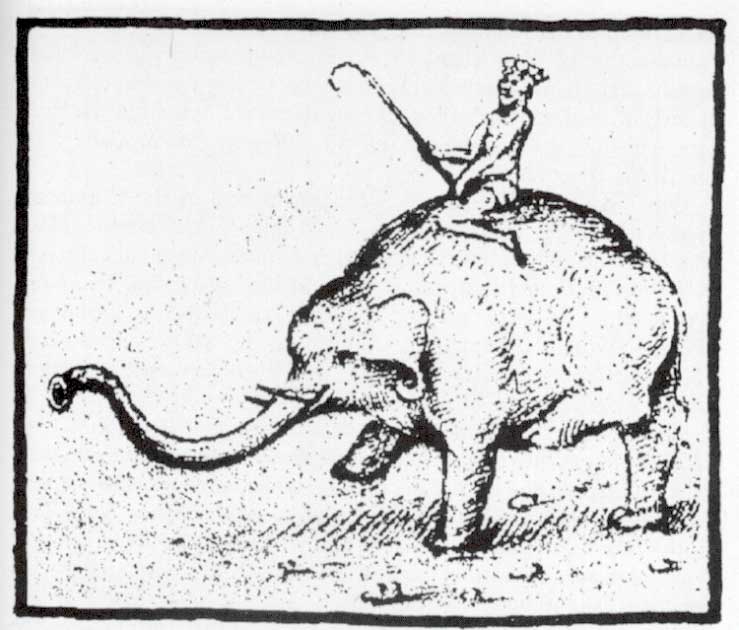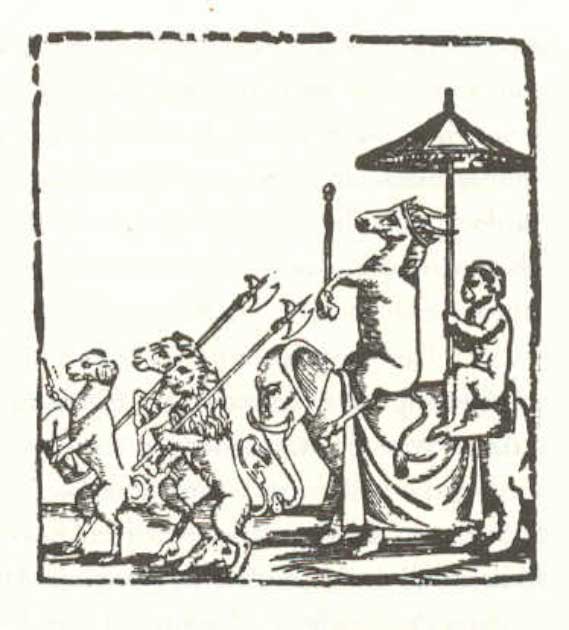In February 1962, a group of Italian workers were digging up the Belvedere Courtyard of the Vatican to modernize a cooling and heating system when they uncovered something totally unexpected: bone. They found four pieces of a giant jawbone and a large tooth at first, so large they thought it was a dinosaur bone.
But these were not fossilized bones: these were the remains of a creature that had died much more recently. To their surprise, the workers found that they were looking at the skeleton of an elephant, which had bafflingly been buried under the Vatican.
The bones were taken into custody to be examined by the Vatican Library collection, where researchers searched for anything to explain the bizarre burial. They found that the bones indeed belonged to a modern elephant, and amazingly were even able to name this particular example. This elephant was called “Hanno”.
But for all this the elephant attracted very little attention, and until the 1980s, nobody inquired about the elephant skeleton buried beneath the Vatican. It was only in the 1990s that the history of the elephant was uncovered by Silvio Bedini and the Smithsonian’s Historian Emeritus.

In 1997, he published his research results in “The Pope’s Elephant”, where among other things he was able to piece together the events that led to an elephant living in the Cortile del Belvedere in Rome. It has been identified that the elephant’s name was “Hanno” or “Annone”, and that it belonged to Pope Leo X.
In 1513, Pope Leo X was elected Pope and Hanno arrived a year later in the entourage of the Portuguese ambassador, quickly becoming a Vatican favorite. But the most unusual thing about the elephant was that it was pure white.
- Tennessee Town Hangs Murderous Mary the Elephant
- Papal Resignation and Papal Murder: Popes Celestine V and Boniface VIII
White elephants (no, actual white elephants) are not a distinct species, but rather like melanistic panthers or “king” cheetahs are a genetic abnormality. Though, to be fair any elephant which came to live in the Vatican would be something of a surprise, white or otherwise.
Who was Hanno?
Hanno was not a giant animal; only about 4 feet tall and was only four years of age when he arrived in Rome. However for early 1500s Italians he was certainly seen as an unusual and huge animal. Here the question comes what was the role of the elephant at that time in Rome and what were the practices followed at that time?
King Manuel I of Portugal gifted Hanno to Pope Leo X. At the relatively young age of 37; Pope Leo was elected to the papacy. As soon as he assumed the title, he set out to transform the Vatican into a hub of Western culture by attracting artists and a cultural spirit.
King Manuel’s gift of Hanno was both the fulfilment of an anticipated gift and a show of how far-reaching Portuguese commercial traders had become. Here, the new Popes frequently received gifts from Christian emperors.
At that time, the leaders of Portugal were known for bringing foreign and exotic animals as gifts for Popes. Thus, people always in expectations that emissaries will arrive with some amazing creatures. But, King Manuel thought of outdoing the previous emperors’ gift of troops of mandrills, parrots, leopards, or monkeys. He was going to give the Pope a great big elephant: beat that, Spain!
In 1514, Italian people knew about what elephants were, and they knew about the arrival of Hanno, but most people in Italy had never seen such a huge animal. A long history is associated with the elephant in Europe, which shows that elephants were brought from India for the purpose of war and spectacle.
But elephants had not been seen there by people for many years. The elephant walked across Rome from the port of Hercules, so thousands of people came to see such a huge animal as it passed though the streets.
The People’s Elephant
It has been identified that Hanno did an impressive job that attracted many people’s attention towards him. He was seen parading through the streets with what was described as a silver tower on his back.
- Pope Joan: Did The Church Elect a Female Pope?
- Preserving Greek Myth: Who Were the Vatican Mythographers?
When Hanno reached the Pope, he kneeled down and bent his head low before rising to his feet and lifting his trunk to blast three times in a show of deference. After that, Hanno apparently sprayed everyone gathered there with water, to the delight of the Pope who was also caught in the deluge.
Hanno was not personally looked after by Pope Leo, however, who had many pressing Papal duties to attend to. He was kept in a special enclosure in the Courtile de Belvedere, and the Italian people were allowed to see him on weekends.
Apart from this, Hanno would also leave his enclosure and pass into the city streets on festival days and other special occasions. However, this could often end up with people being trampled as he became spooked by the large crowds which would flock to see him.

But these problems did nothing to dissuade the citizens of Rome, who loved their white elephant. Even many artists and writers celebrated him in different media. Further, a giant mural of the elephant was commissioned at the Vatican’s entrance by Pope Leo, which was pained by Raphael, the great master of fresco painting. Sadly this great depiction was later destroyed.
Some traces of Hanno can however still be seen around the Vatican, including on the adoration of the Magi tapestry, on two frescoes in the Apostolic Palace, in the Stanza degli Arrazzi, and on a wood mosaic on the door between the Stanza del Incendio del Borgo and the Stanza della Segnatura.
For all this, Hanno was only a guest of the Vatican for a brief time: elephants are not well adapted to life in a Papal palace. After only two years in Rome, in 1516 he died from complications because of constipation at the young age of seven. His death may have been hastened by the treatment administered by the Vatican doctors, who fed his gold dust in an effort to cure him.
Pope Leo X is always remembered as a lover of learning and a strong supporter of artists and writers. Though not necessarily the most politically active or successful Pope, he was a man of compassion, and after Hanno’s death, he was buried beneath the courtyard.
Top Image: Vatican sketch of an elephant from the school of Raphael, possibly after Hanno himself. Source: Ashmolean Museum / Public Domain.
By Bipin Dimri